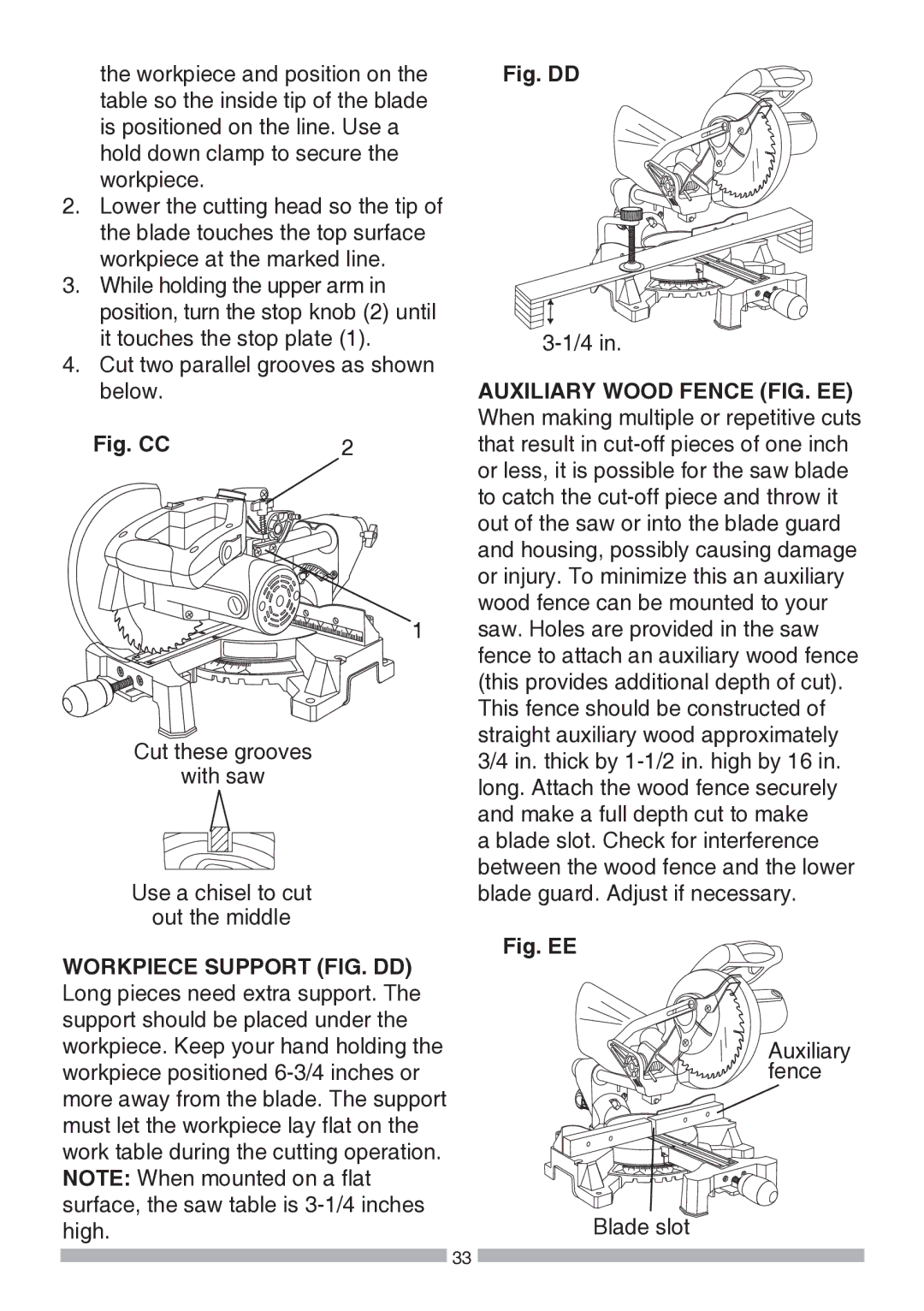
the workpiece and position on the table so the inside tip of the blade is positioned on the line. Use a hold down clamp to secure the workpiece.
2.Lower the cutting head so the tip of the blade touches the top surface workpiece at the marked line.
3.While holding the upper arm in position, turn the stop knob (2) until it touches the stop plate (1).
4.Cut two parallel grooves as shown below.
Fig. CC | 2 |
1
Cut these grooves
with saw
Use a chisel to cut
out the middle
WORKPIECE SUPPORT (FIG. DD) Long pieces need extra support. The support should be placed under the workpiece. Keep your hand holding the workpiece positioned
Fig. DD
AUXILIARY WOOD FENCE (FIG. EE) When making multiple or repetitive cuts that result in cut-off pieces of one inch or less, it is possible for the saw blade to catch the cut-off piece and throw it out of the saw or into the blade guard and housing, possibly causing damage or injury. To minimize this an auxiliary wood fence can be mounted to your saw. Holes are provided in the saw fence to attach an auxiliary wood fence (this provides additional depth of cut). This fence should be constructed of straight auxiliary wood approximately 3/4 in. thick by 1-1/2 in. high by 16 in. long. Attach the wood fence securely and make a full depth cut to make
a blade slot. Check for interference between the wood fence and the lower blade guard. Adjust if necessary.
Fig. EE
Auxiliary fence
Blade slot
![]() 33
33 ![]()
